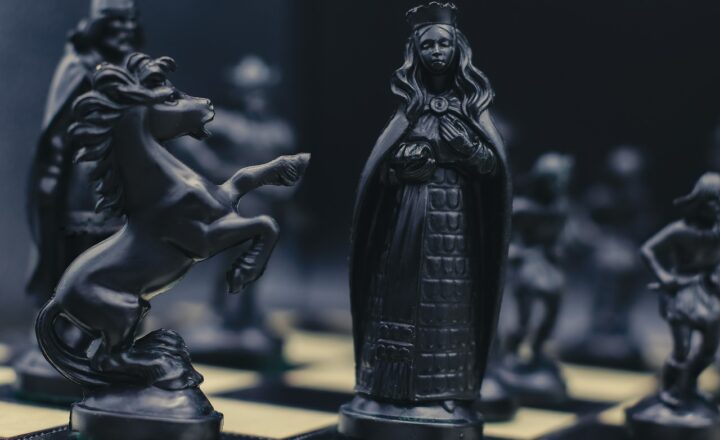The Mysterious Case of the ‘Dancing Plague’ in Medieval Europe
November 15, 2024

In July 1518, residents of Strasbourg (then part of the Holy Roman Empire) were struck by an inexplicable phenomenon dubbed the ‘Dancing Plague.’ Over the course of several weeks, hundreds of people danced uncontrollably and repeatedly in the streets, some of whom reportedly danced until they collapsed, fell ill, or even died. This bizarre event raises questions about mass hysteria, psychological phenomena, and the social dynamics of Medieval Europe that are worth exploring.
1. The Historical Context of the Dancing Plague
During the late Middle Ages, Europe was plagued by socio-economic turmoil, famine, and outbreaks of disease. The 14th century brought the Black Death, which decimated the population and led to widespread fear and paranoia about death and disease. Against this backdrop, the world of Medieval Europe was rife with superstition and the belief that God’s wrath could manifest in various ways, including disease and mass psychosis.
The people of Strasbourg, faced with stressors like war, poor harvests, and the remnants of the plague, were particularly susceptible to psychological contagion. The dance epidemic began with a single woman, Frau Troffea, who inexplicably started dancing in the town square. Soon after, more people joined, leading to the spontaneous and chaotic eruption of dance that lasted for weeks.
2. The Symptoms and Manifestations of the Plague
Witnesses described the affected individuals as seeming consumed by an uncontrollable urge to dance. Historical accounts suggest that the ‘dancers’ did not appear to be experiencing joy, but rather were in a trance-like state, exhibiting symptoms often associated with extreme stress or illness. Reports also indicated that many participants stopped only when they were physically incapable of continuing.
Medical records from the time indicate that some individuals collapsed from exhaustion, and there were rumored cases of death resulting from the frenzy. As the phenomenon escalated, authorities attempted to intervene by establishing makeshift stages and encouraging dancing as a therapeutic remedy. Instead of alleviating the situation, these efforts seemed to exacerbate it.
3. Theories and Explanations for the Plague
Historians and scholars have proposed various theories to explain this strange episode:
- Mass Hysteria: Some psychologists argue that the dancing may have been a form of mass hysteria triggered by extreme stress and social pressures. This phenomenon showcases how collective emotions can influence individual behavior, leading to irrational actions in a community context.
- Infectious Disease or Toxins: Another hypothesis suggests that the group may have consumed ergot, a mold that grows on damp rye and produces hallucinogenic effects. This could explain the erratic behavior displayed by the dancers. However, it’s unlikely that the entire population engaged in such consumption simultaneously.
- Religious or Spiritual Expression: Some researchers propose that the dancing was a form of religious ecstasy, as many of the participants believed they were possessed by spirits or that their behavior was divinely inspired. In those times, people often resorted to ecstatic rituals to demonstrate devotion, seek healing, or express collective sorrow over hardships.
The exact cause of the ‘Dancing Plague’ remains a topic of scholarly debate even to this day, with each hypothesis providing insights into the societal and psychological dynamics of the era.
4. The Aftermath: Responses from Authorities
Local authorities initially took a permissive approach but became alarmed as the outbreak continued. In an attempt to combat the dancing frenzy, the Strasbourg council mandated that the dancers be rounded up and brought to a nearby mountaintop, where they would be encouraged to dance by musicians. The hope was that, exhausted from the effort, the dancers would cease their compulsive behavior.
However, this intervention proved ineffective, and the epidemic persisted for several months. Over time, the media and local clergy began to depict the dancing as a dire spiritual affliction, attributing it to divine punishment, which further complicated understanding of the event.
Eventually, as summer turned to autumn, the plague subsided, leaving behind an enduring mystery that historians and psychologists continue to explore.
5. The Cultural Impact of the Dancing Plague
The ‘Dancing Plague’ has become an intriguing part of European folklore and academia, sparking numerous adaptations in literature, music, and even modern media. The event is frequently cited in discussions about psychological phenomena, as well as a lens through which to view historical instances of collective trauma.
Numerous documentaries and books have been published exploring the mystery, including the role of societal stressors in prompting psychological phenomena. The story of the ‘Dancing Plague’ allows historians to examine not only the medical and psychological explanations but also the socio-economic complexities affecting communities during the Middle Ages.
Conclusion
The ‘Dancing Plague’ of 1518 remains an enduring enigma, intertwining the realms of psychology, history, and societal dynamics. It highlights the thin line between medical phenomena and psychological experiences, showcasing how fears and anxieties can manifest in intriguing and sometimes tragic ways. While the true nature of this extraordinary event may never be fully understood, it serves as a powerful example of how collective experiences can shape the course of history.
Through the lens of the ‘Dancing Plague,’ we gain valuable insights into the psyche of medieval society, their struggles, and their responses to inexplicable events that still boggles the mind centuries later.







